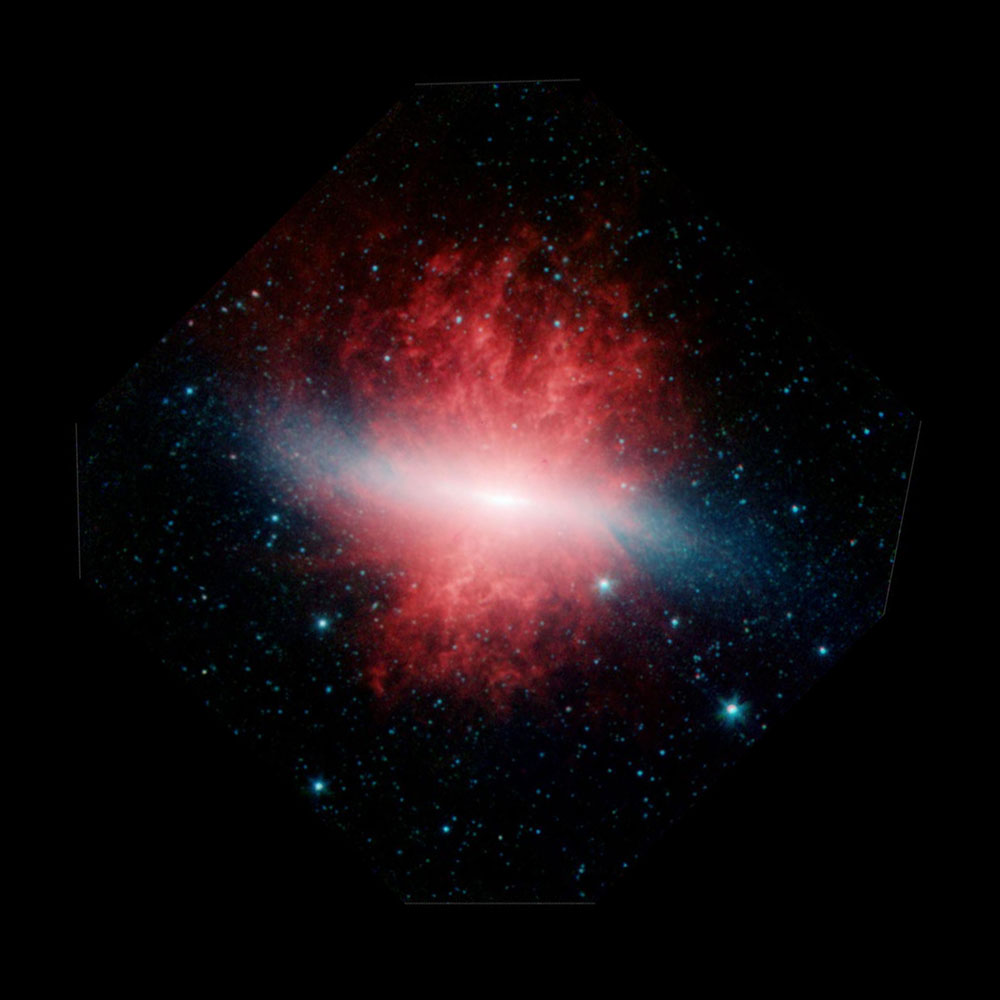Mysterious New Object Discovered in Space

A strange and mysterious newobject in space may the brightest and long-lasting "micro-quasar"seen thus far, a miniature version of the brightest objects in the universe.
Theobject suddenly began pumping out radio waves last year in the relativelynearby galaxy M82, some 10 million light-years away. Its discovery wasannounced Tuesday.
"The new object, whichappeared in May 2009, has left us scratching our heads — we've never seenanything quite like this before," said researcher Tom Muxlow, a radioastronomer at the University of Manchester's Jodrell Bank Observatory inEngland.
M82 is a "starburstgalaxy," one that churns out new stars at a prodigious rate. Most ofthese stars die in huge explosions, with supernovas occurring roughly every 20to 30 years in M82. However, the supernovas the researchers expect to seein that galaxy brighten at radio wavelengths over several weeks and then subsidein later months.
In comparison, the mystery objectturned on very rapidly within a few days and has shown no sign of dying down,even after nearly a year. "It's actually even brightened slightly,"Muxlow explained.
Quasars big and small
Quasarsare found in the center of galaxies and contain supermassive black holes.They are no more than a light year or two across but thousands of timesbrighter than our entire galaxy, which allows them to be seen more than 10billion light years away. Their energy is thought to emerge from matterspiraling at high speeds into the super-massive black holes theoretically atthe centers of most major galaxies.
Get the Space.com Newsletter
Breaking space news, the latest updates on rocket launches, skywatching events and more!
However, this newfound object seemsto lie roughly 100 light years from M82's heart ? far enough away to make itunlikely it is linked with that galaxy's core.
Micro-quasars, liketheir larger counterparts, likely involve matter spiraling into black holes.
However, the object in M82 isthree to 10 times brighter than any micro-quasar seen until now, and hasoutlasted any micro-quasar seen thus far, which generally peak in brightnessafter a few days or weeks.
"We think a massive blackhole must be involved, but we don't really understand how it's gettingfueled," Muxlow said.
More study needed
To learn more about this enigma,"we have just started processing data from an array of 20 radio telescopesacross the Earth taken for the central nuclear region of M82," Muxlowexplained. "These images will allow us to examine the structure of the newradio source in detail. However, processing such huge datasets takessignificant amounts of computing effort and painstaking work. Only then will webe able to see if it is some rare form of micro-quasar. Watch this space!"
Such bright, enduringmicro-quasars might exist in our galaxy as well. "We might expect to seeone maybe once every 100 years," Muxlow conjectured.
Muxlow will detail the discoveryon April 14 at a meeting of the Royal Astronomical Society inGlasgow, Scotland. A paper on the discovery has accepted by the Monthly Notices ofthe Royal Astronomical Society Letters.
- Images — 10,000 Galaxies
- The Strangest Things in Space
- Mystery Surrounding Brightest Cosmic Objects Said Solved
Join our Space Forums to keep talking space on the latest missions, night sky and more! And if you have a news tip, correction or comment, let us know at: community@space.com.

Charles Q. Choi is a contributing writer for Space.com and Live Science. He covers all things human origins and astronomy as well as physics, animals and general science topics. Charles has a Master of Arts degree from the University of Missouri-Columbia, School of Journalism and a Bachelor of Arts degree from the University of South Florida. Charles has visited every continent on Earth, drinking rancid yak butter tea in Lhasa, snorkeling with sea lions in the Galapagos and even climbing an iceberg in Antarctica. Visit him at http://www.sciwriter.us









